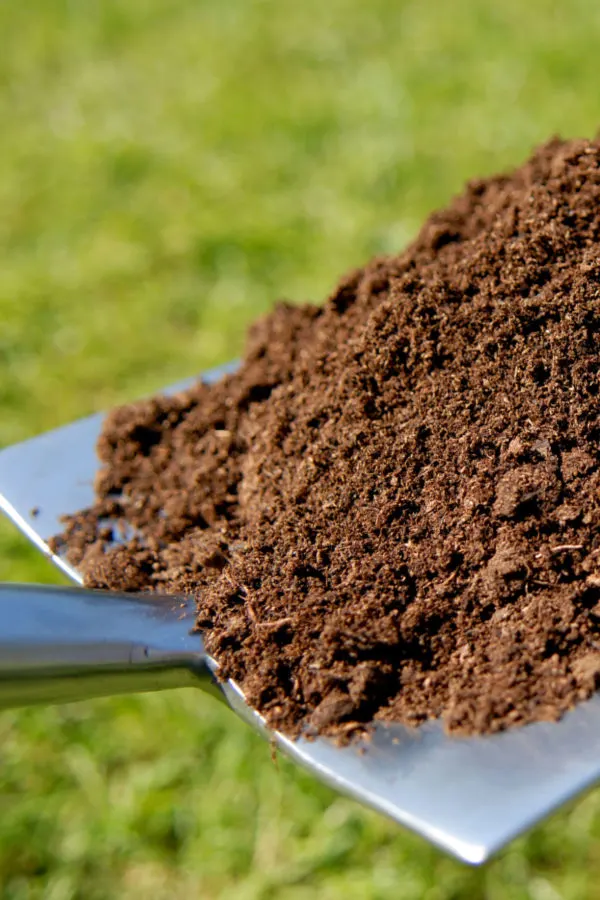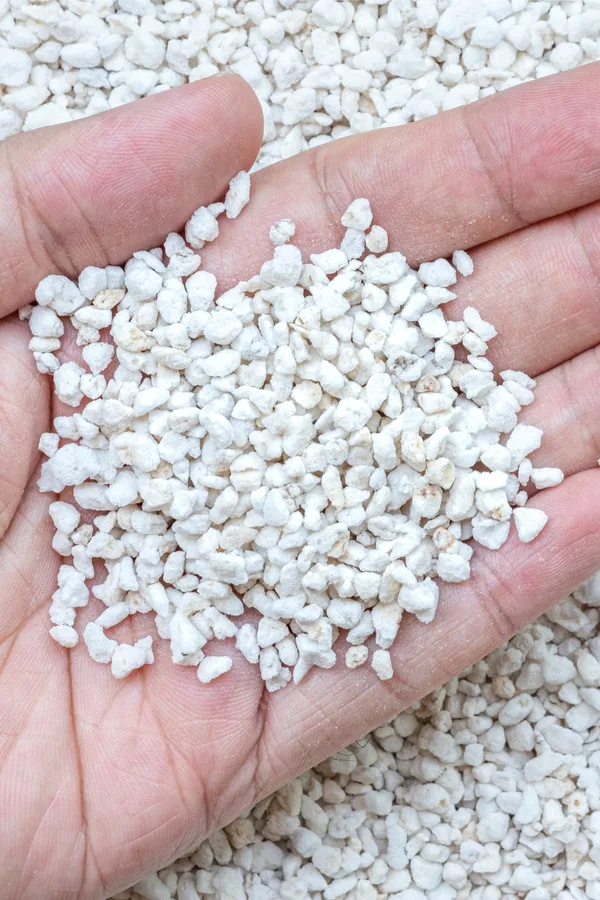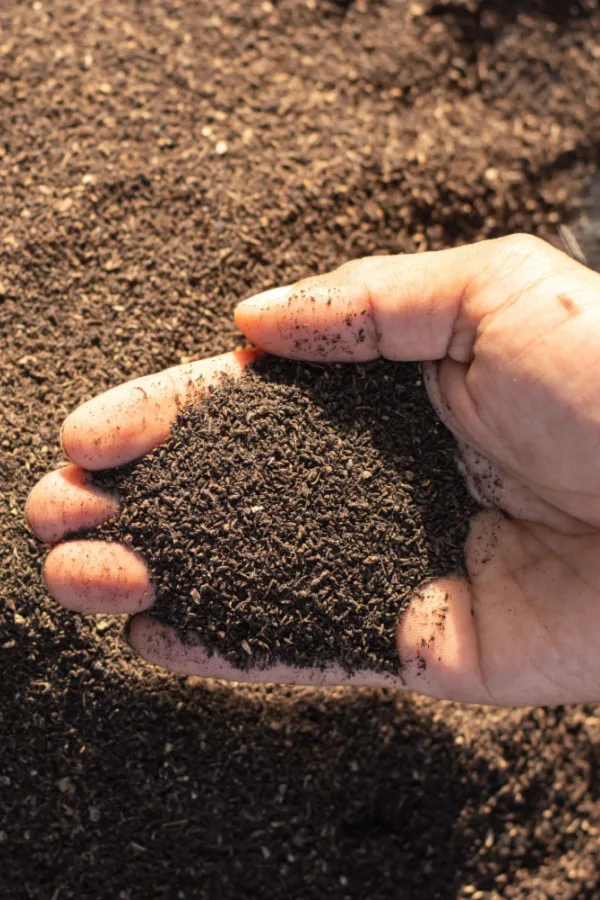When it comes to creating great soil for your raised beds, there are a handful of all-natural ingredients that can play a major role in elevating the health and fertility of your soil to a whole new level of power – and help you grow better than ever because of it!
Whether filling from scratch or working with existing dirt in your beds, keeping the soil within the walls of your raised beds powered up is vital to growing strong, productive plants.
In a raised bed setting, vegetables, herbs and flowers need constant energy to survive and thrive. And if that energy isn’t there to start with, or becomes depleted after a growing season, your plants will start to suffer. Which is exactly why creating great soil right from the start is so important!

The good news is that creating great raised bed soil doesn’t have to be difficult. In fact, by simply mixing in a few all natural ingredients to regular soil, you can easily create a powerful growing medium that will power all of your plants with gusto!
How To Create Great Raised Bed Soil
What Makes Great Raised Bed Soil
Unfortunately, ordinary garden soil and topsoil by themselves are not enough to power plants in a raised bed setting. They simply don’t have the energy, drainage or structure to allow for good growth.
Regular soil is too heavy and dense. Not only do the roots of plants struggle to grow in heavy soil, they also have trouble absorbing moisture and nutrients from them as well. Even worse, heavy soils often have trouble shedding excess water, which can lead to root rot and more.
Although potting soil can be a great base for raised bed soil, it can still be lacking in key nutrients and structure – often actually being too light if it is used exclusively as the soil for raised beds. Of course, another big drawback for potting soil is its cost. It can certainly get quite expensive to fill large raised beds entirely with bags of potting soil.
So what is the solution? How can you make the best raised bed soil around without breaking the bank? And, even more – how can you keep it strong for years to come?

The answer, as you will see below, all comes down to filling your beds with a combination of traditional garden or topsoil, and then adding in generous amounts of compost, perlite and worm castings. Together, these all natural ingredients work to create a light but strong soil that is overflowing with nutrients. And even better, nutrients that can easily be absorbed by the roots of your plants!
4 Must Add Ingredients To Create Great Raised Bed Soil
#1 Top Soil / Garden Soil
Whether you are using existing soil from your garden, or purchasing top soil, it’s important to use a base soil that is loose and free of heavy clumps. The soil in raised beds needs to be heavier than pure potting soil, but not so heavy that plant’s roots can’t grow in it.
If using soil from your garden, it’s a great idea to till it prior to adding to help break it up into a finer consistency. And if purchasing soil, it’s best to look for pulverized topsoil. This is soil that has been run through a screen to be loose and friable.
You can find topsoil in bags or in bulk – but however you purchase it, the important part is to be sure it is loose and breaks apart easily. Raised beds should consist of about 75% (topsoil or garden) soil. Because of that, it’s important to make sure that you are starting with a base soil that is easy to mix and work with.

#2 Compost – How To Create Great Raised Bed Soil
Next, it’s time to lighten up and energize your raised bed soil. And to do that, it all starts by adding in compost! Without a doubt, compost is the number one must-use ingredient to add to raised bed soil. Compost truly has it all. It’s lightweight, full of nutrients, and also contains all kinds of helpful bacteria and organisms that bring soil to life.
The light and airy make-up of compost is perfect for loosening up heavy soil. In turn, that allows roots to grow more freely. That light make-up also helps water, air and nutrients flow more easily through the soil to get to the roots as well.
But even better, the nutrients that are within compost are in a form that the roots of plants can easily absorb. And perhaps best of all, compost can hold serious amounts of moisture to help roots stay hydrated. How much? As much as ten times it’s own weight in moisture!
When it comes to how much compost is enough when adding to raised beds, a good rule of thumb is to get your soil’s overall make-up to consist of around 20% compost.
Perlite – How To Create Great Raised Bed Soil
Probably one of the most overlooked and under-used of all natural ingredients, perlite can be a huge difference maker for helping the soil in raised beds and containers.

So what is perlite? Perlite is the white, styrofoam-like pellets you often see in commercial potting soil mixes. Although it often mistaken for styrofoam, it’s actually volcanic glass that has been heated until it explodes into super light, puffy, pebble-like pellets.
Perlite is incredible for lightening the overall structure of soil. Weighing less than a pound for cubic foot, those tiny pebbles help to lighten heavy soil in an instant. They also keep the soil around it from compacting together. That, in turn, is great for allowing water, oxygen and nutrients to flow more easily to the roots of plants.
A good rule of thumb for adding perlite to your raised beds is to mix in 1 cup of perlite for every square foot of raised bed space. And here is some good news, even though it is natural and organic, it doesn’t break down – so you wont have to keep replacing it! See: How To Use Perlite To Create Better Soil & Grow Healthier Plants!
Worm Castings – How To Create Great Raised Bed Soil
The fourth and final main ingredient to add to your raised bed soil mix is worm castings. Quite simply, worm castings are incredible for adding serious power and structure to your soil – all while also helping to lighten it up even more in the process.
Worm castings are the manure of earthworms. And they are loaded with minerals and nutrients that absorb into the roots of plants with ease! They are extremely lightweight and help add humus and energy to the soil. Much like compost, they can also absorb and hold moisture for your plants as well.

For worm castings in raised beds, mix in 1/2 cup for every square foot of growing space. This is not only a good practice when first creating your beds, but to do every spring as well. It’s a quick and easy way to help recharge the soil with nutrients. Affiliate Product Link: WIGGLE WORM 100% Pure Organic Worm Castings
A Few All Natural Extra Ingredients To Add – How To Create Great Raised Bed Soil
There are also a few other all-natural ingredients that you can add to your raised beds at any time of the year to help keep your beds powered up. At the top of that list are coffee grounds and ground up egg shells.
Coffee grounds are a great source of low and slow source of nitrogen for plants. They also help to absorb and hold moisture and add humus and structure to the soil. Egg shells, on the other hand, are a great source of calcium and other trace elements that can help rebuild tired soil.
But don’t just crumble up your egg shells and toss them in the dirt! When adding egg shells, it’s always best to first grind them into a powder. Even small egg shell pieces can take a long time to break down. But by pulverizing them first, you speed up the process to help quickly release the power of the shell into the soil.
Here is to filling your raised beds with the best soil around – and to growing better than ever this year!
This Is My Garden
Follow Our Facebook Page For Great Gardening Tips And Advice! This Is My Garden Facebook Page
This Is My Garden is a garden website created by gardeners, for gardeners. Jim and Mary Competti have been writing gardening, DIY and recipe articles and books and speaking for over 15 years from their 46 acre Ohio farm. They publish three articles every week, 52 weeks a year. Sign up today to follow via email, or follow along!
